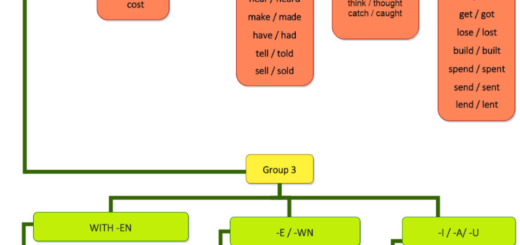UNIT 4: «I’M AT THE STREET PARTY»
ALL ABOUT US 4 – UNIT 4
VOCABULARY
cooking – cocinando
washing up – lavando los platos
drying up – secando los platos
sweeping – barriendo
laying the table – poniendo la mesa
painting – pintando
watering the flowers – regando las flores
gardening – cuidando el jardín
ADJECTIVES
tidy – arreglada / ordenada
untidy – desarreglada / desordenada
weak – débil
strong – fuerte
lazy – vaga
hard-working – trabajadora
GRAMMAR
PRESENT CONTINUOUS – PRESENTE CONTINUO
Usamos el presente continuo para hablar de algo que estamos haciendo en este momento, en el momento en el que estamos hablando.
AFFIRMATIVE
La fórmula para hacer el modo AFIRMATIVO es:
SUJETO + Verbo TO BE + Verbo terminado en -ING + COMPLEMENTOS
NEGATIVE
La fórmula para hacer el modo NEGATIVO es:
SUJETO + Verbo TO BE + NOT + Verbo terminado en -ING + COMPLEMENTOS
Por ejemplo:
| AFFIRMATIVE | NEGATIVE |
| I’m laying the table – Yo estoy poniendo la mesa | I’m not laying the table – Yo no estoy poniendo la mesa |
| You’re washing up – Tu estás lavando los platos | You aren’t washing up – Tu no estás lavando los platos |
| She’s watering the flowers – Ella está regando las flores | She isn’t watering the flowers – Ella no está regando las flores |
| He’s gardening – El está cuidando del jardín | He isn’t gardening – El no está cuidando del jardín |
| We’re cooking – Nosotros estamos cocinando | We aren’t cooking – Nosotros no estamos cocinando |
| They’re painting – Ellos están pintando | They aren’t painting – Ellos no están pintando |
INTERROGATIVE & ANSWERS
Para hacer preguntas tenemos que invertir el orden del sujeto y del verbo ‘to be’. La fórmula sería así:
Verbo TO BE + SUJETO + Verbo terminado en -ING + COMPLEMENTOS ?
Por ejemplo:
| INTERROGATIVE | ANSWERS |
| Are you cooking? – ¿Estás tu cocinando? | Yes, I’m / No, I’m not – Si, si estoy / No, no estoy |
| Is he drying up? – ¿Está el secando los platos? | Yes, he’s / No, he isn’t – Si, si está / No, no está |
| Is she sweeping? – ¿Está ella barriendo? | Yes, he’s / No, he isn’t – Si, si está / No, no está |
| Are we painting? – ¿Estamos nosotros pintando? | Yes, we’re / No, we aren’t – Si, si estamos / No, no estamos |
| Are they gardening? – ¿Están ellos cuidando el jardín? | Yes, they’re / No, they aren’t – Si, si están / No, no están |
* Podéis recordar el verbo TO BE en la pestaña de «No olvides…»
WANTS TO / DOESN’T WANT TO
QUIERE / NO QUIERE
Usamos ‘wants to‘ y ‘doesn’t want to‘ para hablar de lo que quiere o no quiere una tercera persona, es decir, she o he (ella o el).
AFFIRMATIVE
SHE / HE + WANTS TO + ACCIÓN
NEGATIVE
SHE / HE + DOESN’T WANT TO + ACCIÓN
Debemos recordar que en afirmativa el verbo WANT siempre lleva una -S al final cuando hablamos de ‘SHE’ o ‘HE’. Por el contrario, en negativa, debemos usar DOESN’T para hablar de ella o el y no se añade -S al final de WANT.
¡No olvides escribir TO detrás de WANTS / WANT!
Por ejemplo:
He wants to get his horse – El quiere coger su caballo
He wants to get his horse – El quiere coger su caballo
She wants to do kung fu – Ella quiere hacer kung fu
She doesn’t want to water the flowers – Ella no quiere regar las flores



